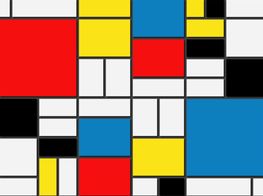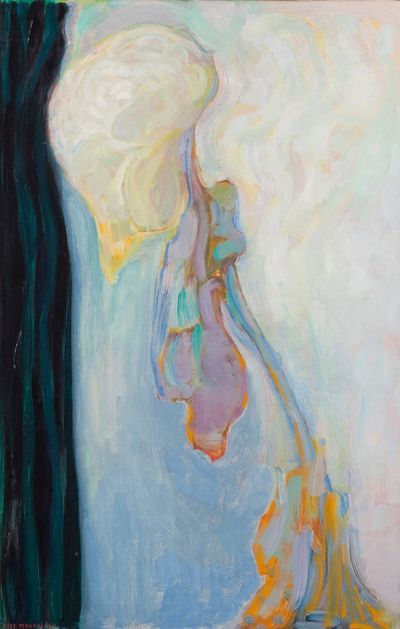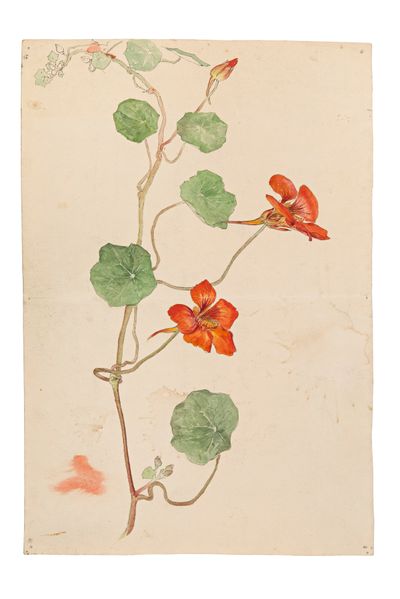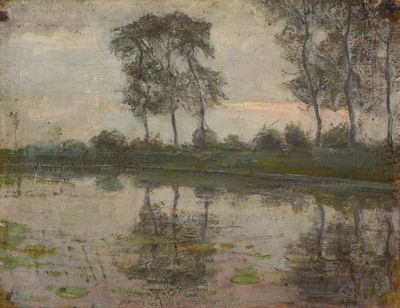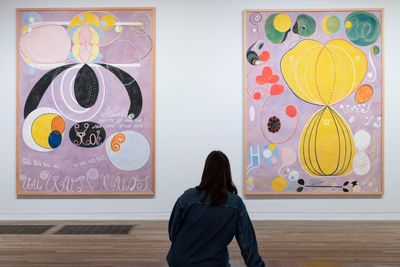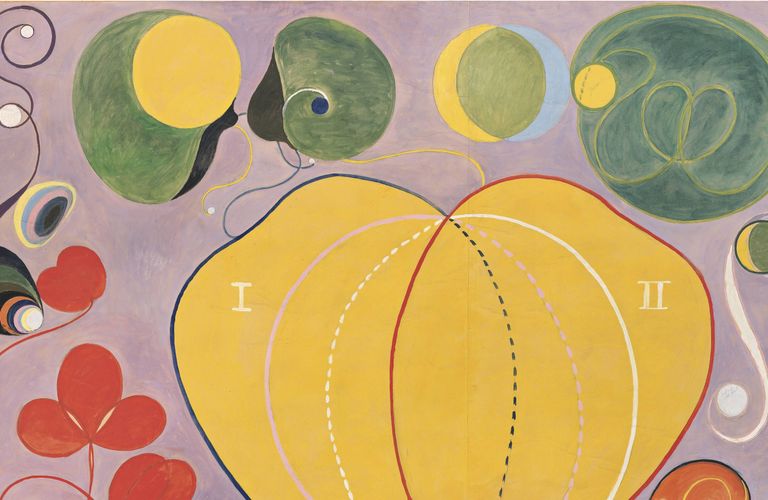
Hilma af Klint and Piet Mondrian's Ode to the Botanical
As spring arrives in London, Tate Modern welcomes visitors to an exhibition of nature-inspired paintings by Hilma af Klint and Piet Mondrian.
The major exhibition, Hilma af Klint & Piet Mondrian: Forms of Life (20 April–3 September 2023), traces the modern painters' visions of the natural world and traverses their parallel journeys to abstraction.
From intricate scientific studies of plants and flowers to towering abstract compositions, this wondrous show features work that boasts af Klint and Mondrian's extraordinary way of thinking through nature.
Born in Stockholm in 1862, Hilma af Klint studied at the city's Royal Academy of Fine Arts where she practiced botanical, landscape, and portrait painting. After graduating in 1887, her focus shifted to spiritualism where she began to paint abstract and symbolic forms, abandoning her conventional training.
She made paintings that were ahead of their time. Af Klint's work was largely excluded from art history until 1986 when her work was included in The Spiritual in Art: Abstract Painting 1890-1985 (23 November 1986–8 March 1987) exhibition at the Los Angeles County Museum of Art.
Since then, her work has been shown all over the world at institutions including MoMA PS1 and the Solomon R. Guggenheim Museum in New York, the Serpentine Gallery in London, and the Centre Pompidou in Paris.
Unlike af Klint, Piet Mondrian was recognised during his lifetime. Born in Amersfoort in 1872—a decade apart from af Klint in the same region of Western Europe—Mondrian studied painting at the Rijksakademie van Beeldende Kunsten in Amsterdam between 1892 and 1897.
After a period of painting naturalistic landscapes in the academic tradition of the time, Mondrian began to favour bolder colours and simpler forms. He evolved an abstract style that allowed him to see the world anew in rigid, primary-coloured compositions, and made him one of the greatest abstract painters of all time.
Though af Klint and Mondrian never met or experienced each other's work, they shared the same spiritual worldview. Despite being classically trained, both were fascinated by theosophy, a religion outside the perimeters of classical art education that espoused a belief in the spiritual powers of life and a connection to otherworldly realms.
In Forms of Life, we see the detailed biological studies Mondrian was inspired to make after his role at the University of Leiden where he made scientific drawings of bacteria under a microscope, alongside the delicate botanical drawings af Klint made before her time as an illustrator for Stockholm's veterinary institute.
The artists' interest in biology led to a fascination with the invisible laws of nature. The exhibition explores this connection and brings together a display that puts new ways of understanding spirituality through art at centre stage.
It begins with a selection of af Klint and Mondrian's early landscape paintings, works that are starkly traditional in comparison to what follows.
Works like af Klint's Spring Landscape from Lommma Bay (1892) and Mondrian's The Gein: Trees along the water (c.1905) reveal the artists' wonder for the natural world. Vast skies of pillowy clouds and patches of lush grassland painted in an expressive style introduce us to the artist's journey into nature.
Subsequently, the exhibition leads visitors into room after room of spiritualist art.
In Mondrian's painting Evolution (1911), we see three figures who represent the stages of evolution from the physical to the spiritual world, a narrative proposed by Theosophy. The figurative painting is a rare sight among the master of line's most recognised body of work and is perhaps the closest work to crossover with af Klint's.
On the other side of the room, pastel colours depicting symbolic forms of spirals and snail shells curl into the centre of the canvas, representing the trajectory of evolution. Af Klint's 'The Evolution, The WUS Seven-Pointed Star' series (1908) visualises what she believed to be humanity's ascent to a higher spiritual state. It is a bewildering yet beautiful example of the artist's experimentation with abstract language.
As the exhibition continues we see the artists' work become more considered and defined, and the unique vernaculars of af Klint and Mondrian become more apparent.
Works like Composition in colour B (1917) and Composition with Red, Black, Yellow, Blue and Gray (1921) demonstrate Mondrian's abandonment of symbolism altogether in favour of neo-plasticism—a term he coined in which colour, line and form were used in their purest state and chosen through plainly rational means.
Af Klint's series, The Ten Largest (1907), dominates the final room of the exhibition. The monumental paintings, each over three metres tall, represent the entire life cycle of a human, from birth to death.
Made in just a few months without any preliminary drawings, these works poured out of af Klint with great force as though a higher spirit was directing her actions.
The paintings incorporate imagery that feels both botanical and cosmological—organic forms vacillate between seeds and petals, planets and spiral galaxies.
Forms of Life is a beautifully put-together show that encourages us to think more deeply about the early years of abstraction. The show gives insight into the fascinating history of af Klint while calling attention to Mondrian's lesser-shown symbolist paintings.
Though it sometimes becomes challenging to draw on the visual similarities between the two artists' bodies of work, the exhibition sheds light on the intangible connection between af Klint and Mondrian's ideas and beliefs as spiritualists.
While both artists believed that art could reflect the invisible mystic of nature, af Klint favoured symbolism contrasting Mondrian's preference for the rational and purely abstract. —[O]
Main image: Hilma af Klint, The Ten Largest, Group IV, No. 7, Adulthood (1907) (detail). Tempera on paper mounted on canvas. 800.1 x 596.9 cm. Courtesy the Hilma af Klint Foundation, Stockholm.


